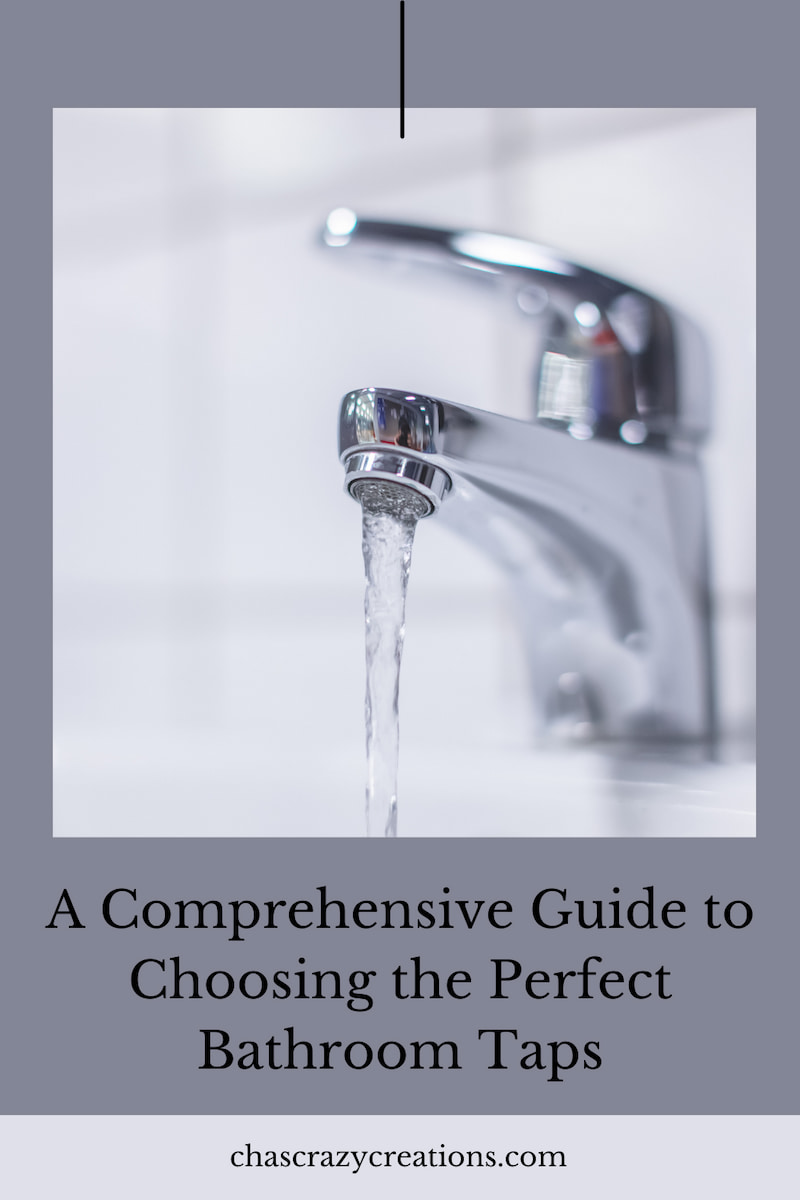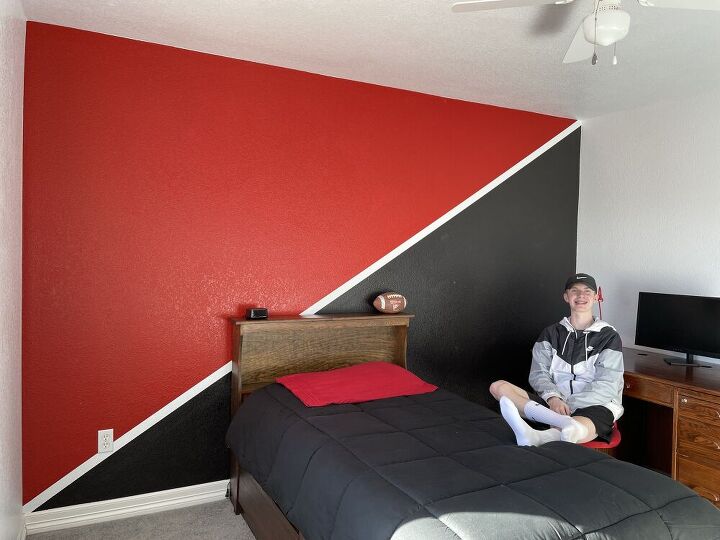A Comprehensive Guide to Choosing the Perfect Bathroom Taps
When it comes to bathroom design, there’s a crucial component that often goes overlooked – the bathroom taps. These seemingly small fixtures play a significant role in the functionality, aesthetics, and overall feel of your bathroom. Whether you’re undertaking a complete bathroom renovation or just looking to update a few elements, understanding the intricacies of bathroom taps can make all the difference in achieving your desired outcome.
This post may contain affiliate links, I earn from qualifying purchases at no extra cost to you. Click here for my disclosure policy

Bathroom Sinks and Faucets: The Heart of the Matter
Bathroom sinks are a central feature in any bathroom, and the choice of faucet can greatly impact the sink’s functionality and style. With various options available, from single-hole bathroom faucets to lavatory faucets, it’s essential to consider your preferences and the overall aesthetic you’re aiming for.
Modern updates can effortlessly transform an entire bathroom, breathing new life into the space for your next project.
The Importance of Flexibility and Taste
Bathroom hardware, including shower faucets and fixtures, plays a pivotal role in enhancing the overall bathroom experience. The preferences of homeowners vary widely, from water-saving options that reduce water consumption to high-quality fixtures that evoke a sense of luxury.
The introduction of WaterSense-certified products, endorsed by the EPA, highlights the growing emphasis on environmentally conscious choices.
A Plethora of Choices: Materials and Finishes

Bathroom taps come in a wide array of materials and finishes, each with its own unique attributes. Chrome, brass, nickel, bronze, and even copper finishes offer a range of styles, from sleek modernity to classic elegance. Brands like Moen, Delta, Pfister, and Kohler offer a diverse selection, ensuring that your bathroom taps align with your design aspirations.
Handles and Spouts: The Perfect Combination

The handles and spouts of your bathroom taps can significantly impact both aesthetics and functionality. Whether you opt for a single lever handle or a more traditional dual-handle setup, the choice should cater to your daily usage habits and overall design vision.
Spouts, including tub spouts, can range from simple and understated to bold and ornate, making a statement in your bathroom’s design.
The Battle Against Fingerprints and Maintenance Woes
Matte black and stainless steel finishes have gained popularity due to their sleek and modern appearance, but they can be prone to showing fingerprints and water spots. This aspect of maintenance should factor into your decision-making process.
On the other hand, classic finishes like chrome and brass are not only visually appealing but also easier to clean and maintain over time.
Installation Made Easy

While the visual aspects of bathroom taps are essential, don’t overlook the practicality of installation. Consider whether you’ll need a professional to assist with the installation process, especially for shower systems and tub faucests.
Products with clear installation guides and user-friendly mechanisms can save you time, effort, and potentially the need for future repairs.
In conclusion, bathroom taps are more than just functional fixtures – they’re an integral part of your bathroom’s design and functionality. With the variety of options available, from classic styles to modern updates, you have the flexibility to tailor your choices to your preferences and taste. The diverse materials and finishes allow you to strike the perfect balance between aesthetics and maintenance ease, ensuring a lasting impact on your bathroom’s overall look and feel. So, whether you’re undertaking a complete renovation or just aiming to upgrade a few fixtures, make sure to consider every aspect of bathroom taps to achieve the bathroom of your dreams.
Shop any of these stores and I receive a small commission at no cost to you.
 PARLOS 2-Handle Bathroom Si...Shop on Amazon
PARLOS 2-Handle Bathroom Si...Shop on Amazon Bathroom Faucets for Sink 3...Shop on Amazon
Bathroom Faucets for Sink 3...Shop on Amazon Ultimate Unicorn Waterfall ...Shop on Amazon
Ultimate Unicorn Waterfall ...Shop on Amazon NEWATER Two-Handle Waterfal...Shop on Amazon
NEWATER Two-Handle Waterfal...Shop on Amazon
Bathroom Taps Q & A
What are the best bathroom faucet brands? What brand of faucets do plumbers recommend?
There are several reputable bathroom faucet brands known for their quality, durability, and stylish designs. Keep in mind that the “best” brand can vary based on personal preferences, budget, and specific needs. Here are some well-regarded bathroom faucet brands:
- Delta Faucet: Known for innovative designs, Delta offers a wide range of faucets with features like touchless technology and water-saving options.
- Moen: Moen is praised for its user-friendly designs, durability, and a variety of styles to match different bathroom aesthetics.
- Kohler: Kohler offers a diverse selection of faucets, from classic to modern, often incorporating advanced technologies like motion sensing and temperature control.
- Grohe: Grohe is recognized for its German engineering, delivering precision, quality, and elegant designs.
- American Standard: A reliable brand, American Standard provides a wide range of faucets with a focus on functionality and user comfort.
- Pfister: Pfister faucets are known for their affordability, durability, and a variety of styles suitable for different bathroom decor.
- Hansgrohe: Another German brand, Hansgrohe, offers premium faucets with a focus on innovative design, water efficiency, and durability.
- Brizo: Brizo faucets are known for their high-end and luxurious designs, often incorporating advanced technology and unique aesthetics.
- Vigo: Vigo offers modern and sleek designs at an affordable price point, making it a popular choice for those looking for style on a budget.
- Signature Hardware: This brand is well-regarded for its vintage and classic designs, often inspired by historical periods.
When choosing a bathroom faucet, consider factors such as your preferred style, finish (chrome, brushed nickel, oil-rubbed bronze, etc.), water-saving features, and your budget. Reading customer reviews, checking warranties, and considering the overall reputation of the brand can also help you make an informed decision.

How to change bathroom taps?
Changing bathroom taps (faucets) involves several steps to ensure a proper and leak-free installation. Here’s a general guide on how to change bathroom taps:
Tools and Materials You’ll Need:
- New taps (faucets)
- Adjustable wrench
- Basin wrench (if needed)
- Screwdriver (Phillips or flathead)
- Plumber’s tape (Teflon tape)
- Bucket or towels
- Towel or cloth
Step-by-Step Guide:
- Turn Off Water Supply: Before you begin, turn off the water supply to the bathroom. There should be shut-off valves under the sink or elsewhere in your plumbing system. If you can’t locate the shut-off valves, you may need to shut off the main water supply to your house.
- Drain the Water: Turn on the old taps to release any remaining water in the lines. Place a bucket or towels under the sink to catch any water that may come out.
- Remove the Old Taps: Use an adjustable wrench or basin wrench to loosen and remove the nuts that secure the old taps to the sink. Keep track of any washers, gaskets, or components you remove. Carefully lift the old taps away from the sink.
- Clean the Surface: Clean the area where the old taps were installed to ensure a clean surface for the new taps.
- Apply Plumber’s Tape: Wrap a few layers of plumber’s tape (Teflon tape) clockwise around the threads of the water supply lines to create a watertight seal.
- Install the New Taps: Position the new taps over the mounting holes in the sink. Insert the water supply lines through the holes, and secure the taps in place using the provided hardware or nuts. Tighten the nuts by hand and then use a wrench to snugly secure them. Be careful not to overtighten, as it could damage the taps or cause leaks.
- Connect Water Supply Lines: Connect the water supply lines to the corresponding hot and cold water valves under the sink. Use the adjustable wrench to tighten the connections, making sure they’re snug but not overly tight.
- Test for Leaks: Turn on the water supply valves and slowly turn on the taps to check for leaks. If you notice any leaks, tighten the connections slightly until the leaks stop.
- Check Functionality: Test the new taps to ensure they operate smoothly and that both hot and cold water flows as expected.
- Finishing Touches: Wipe away any excess water and clean the sink area. If the new taps include decorative covers or caps, install them according to the manufacturer’s instructions.
Changing bathroom taps can vary based on the specific type of taps and the design of your sink. It’s important to read the manufacturer’s instructions that come with your new taps and follow any specific guidelines they provide.
If you’re not confident in your plumbing skills, consider hiring a professional plumber to install the new taps to ensure a proper and leak-free installation.










